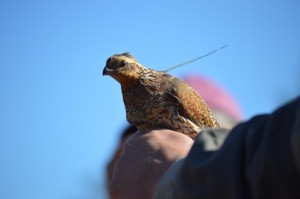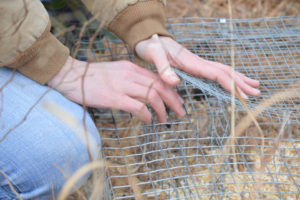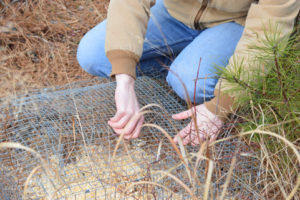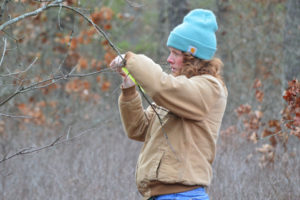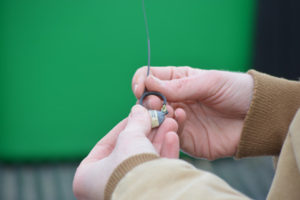The latest from the NJ Audubon Northern Bobwhite Restoration Initiative: trapping birds for collar and release! The quail in this project are tracked via radio telemetry in the field to determine movements, predation, site fidelity, habitat use and nesting by graduate students from the University of Delaware.
When the birds for this project are relocated from Georgia to New Jersey, they are fitted with radio collars for tracking. From the NJ Audubon website:
Each quail was outfitted with a radio transmitter fitted around their neck. The birds arrived in NJ with the transmitters attached, each broadcasting a unique radio frequency. Using a radio receiver and antenna each bird can be located and through the signal their location and status (alive or dead) can be determined. Tracking began immediately following the release and revealed the birds were sticking together in coveys and they remained within the general area of where they were released.
These collars last about ten to eleven months, per John Parke of NJ Audubon. But when cold weather sets in, it shortens the battery life. So the team has to catch the birds in order to replace their collars. This past Monday, John, along with fellow NJA staffers Lindsey Gafford and Ryan Hasko, came down to meet with Kaili Stevens to weigh any quail found in the traps and re-collar them with new transmitters.
The traps are carefully placed and baited (currently with cracked corn, but Kaili is looking for millet as well), then slightly camouflaged with tree branches. Each location is marked so that the researchers and staff can find it easily.
Kaili then demonstrated the best method for holding the birds while recollaring them before releasing them back into the wild.
NJ Audubon will be out in the field every week to check the traps and make sure the birds are thriving! They’ve already proven themselves to be tremendously resilient, and we hope to have more good news after the third and final release this spring!

